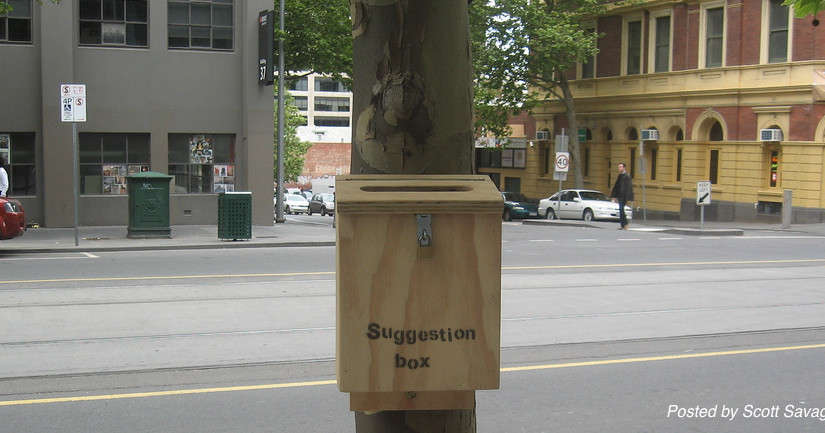How To Effectively Utilize an Organization’s Suggestion Box
March 18, 2015 | Communication, Leadership
I was recently at a meeting where someone came up with the “suggestion” to have a suggestion box. The meeting was with a non-profit organization where I volunteer some time helping with their strategic planning. A suggestion box can be a good tool to collect feedback from its employees or members if it is implemented and used properly.
However, receiving the feedback is not the most important piece of this exercise. The most important is responding or acting on the feedback received. One way that any organization can help make its employees or members become apathetic is to solicit feedback but not address it.
One tool that can be used to address feedback is the Stop Light Report. While the report is used for many different applications, the Studer Group recommended it be used as a way to address organizational feedback. The Stop Light Report’s main function is to follow up on feedback received from an organization’s members or employees. In this application, leadership would collect the contents of the suggestion box. If we were to implement this at an organization, we would recommend collecting the contents consistently on a monthly basis for at least the first year. Frequency thereafter can be determined by the amount of suggestions collected. We would recommend that an organization go no longer than 3 months between addressing the contents of the suggestion box. Then, leadership would read through the suggestions and separate the feedback into categories.
The Stop Light Report uses Green, Yellow and Red hence its title. Green indicates items that are already completed or will be completed before the next round of feedback is collected. Yellow indicates that leadership wants to act but either more information or resources need to be gathered before it can be fully implemented. Red indicates that leadership is not going to move forward with the recommendation but also explains “why” the organization cannot move forward.
Once the decisions are made on how to reply to the feedback, the information is to be transferred to the report. An example of a Stop Light Report can be found here. The report should contain a date and be printed in color on at least 11×17 or larger paper and posted above the suggestion box. Now people can return to the area where feedback their was submitted and receive a follow up response. It should also be indicated that previous stop light reports are available in the office or online if the company has an intranet site in the case someone wants to review them.
Feedback from employees or members with frequent follow up from leadership can help build rapport and trust between the parties involved. Feedback that goes unanswered (I’ll take it under advisement….) only creates a disconnect between leaders and front line staff or members.
This is only one of many ways that feedback can be solicited and follow up can be executed consistently and thoroughly at an organization. What are other ways that feedback and follow up can be collected at your organization?
« Back to Blog Home
Comments
Leave a Reply
You must be logged in to post a comment.




No comments found.